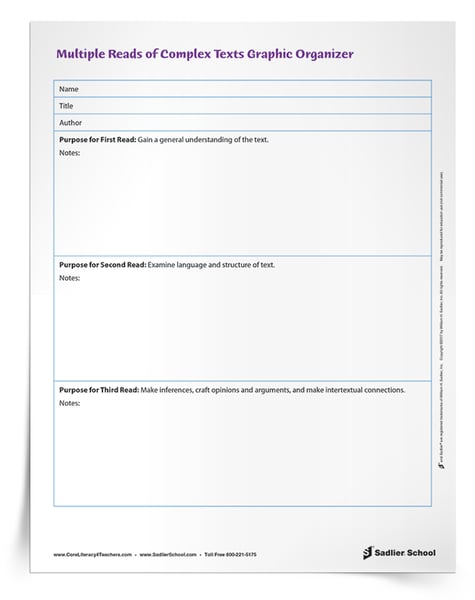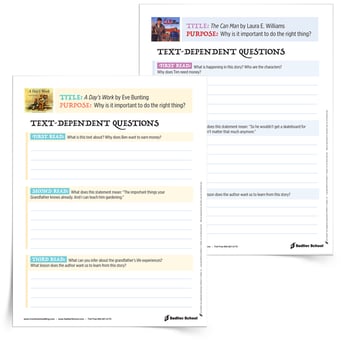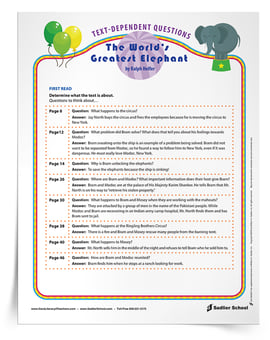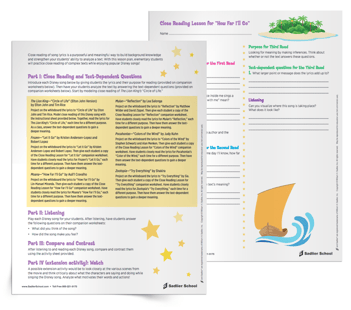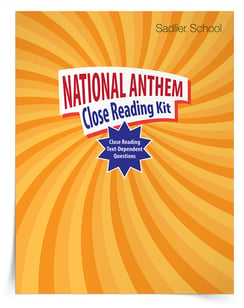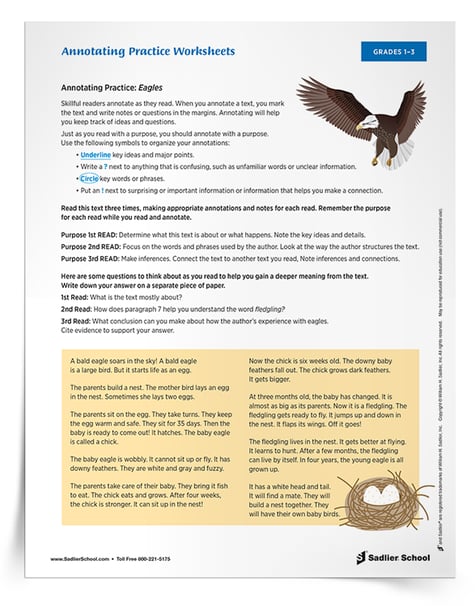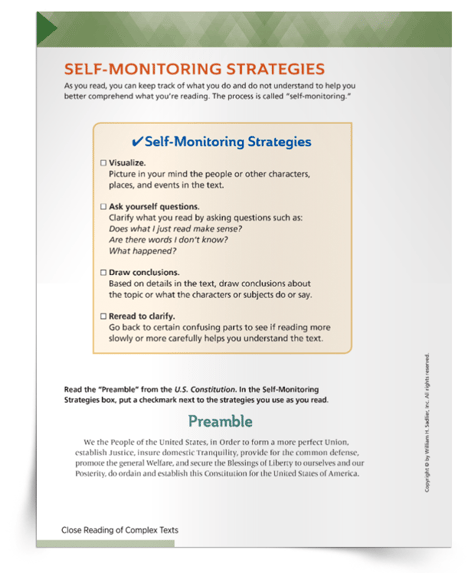October 17, 2018 ELA K-5, ELA Focus - Close Reading, ELA Resources - Graphic Organizers, ELA Resources - Activities, ELA Resources - Tip Sheets, Core Literacy
Close Reading Worksheets for Elementary Students [8 Printable Resources]
By: Erin Lynch
I've compiled printable worksheets that will assist educators in teaching close reading strategies to elementary students. In this article, you'll explore the eight essential elements of close reading for elementary students and discover lesson plans, student worksheets, tip sheets, and more!
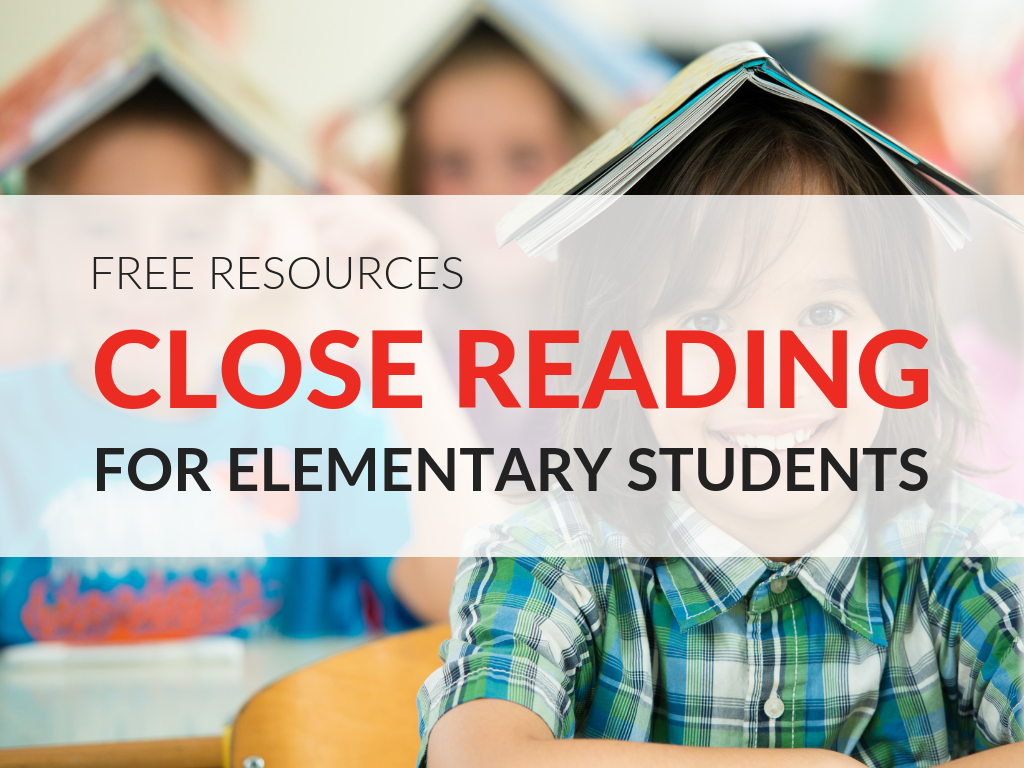
Close reading is an intentional, methodical instructional approach to deeply analyzing a text in order to uncover, engage with, and interpret its meaning. Put more simple, close reading is reading a text more than once in order to understand its deeper meaning. (Lapp, Moss, Grant & Johnson, 2016).
To effectively teach close reading so elementary students gain a deeper understanding of a text, teachers must incorporate the essential elements for conducting a close read.
The key elements of close reading outlined by Diane Lapp, Barbara Moss, Maria Grant and Kelly Johnson, who “literally” wrote the book on close reading (Turning the Page on Complex Texts: Differentiated Scaffolds for Close Reading Instruction) include:
- Short Text
- Complex Text
- Limited Frontloading
- Multiple Reads
- Annotate
- Text Dependent Questions
- Collaborative Conversations
- Assessment
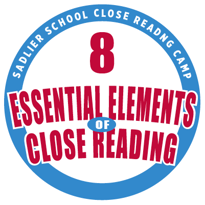
To learn more about each of the essential elements and the close reading approach of Diane Lapp, Barbara Moss, Maria Grant and Kelly Johnson you can attend Sadlier's FREE 2-Part Close Reading Camp. Not only will you learn how to enhance and simplify your teaching of close reading, but all camp attendees receive a Certificate of Participation!
Additionally, Diane Lapp, Barbara Moss, Maria Grant, and Kelly Johnson have outlined the essentials of close reading in this informative professional development eBook.
Close Reading Worksheets for Elementary Students
Multiple reads, text-dependent questions, annotating, and self-monitoring are the close reading strategies I'll be focusing on in this article. Below you'll find a summary of each close reading strategy along with printable close reading worksheets to use with elementary students.
Strategy 1: Multiple Reads
Close reading is when a reader reads a text multiple times in order to analyze its details so as to make interpretations and gain a deeper understanding. There are three purposes for each multiple read that will ensure students enhance their understanding of a text, they are:
PURPOSE FOR 1ST READ
Gaining a general understanding of the text.
PURPOSE FOR 2ND READ
Examine language and structure of text.
PURPOSE FOR 3RD READ
Make inferences, craft opinions and arguments, and make intertextual connections.
Having your students do multiple reads of a text (that is, re-reading more closely with a specific purpose for each read) is an excellent way to deepen their understanding of the meaning of text! Download a Multiple Reads of Complex Texts Graphic Organizer to use in the classroom.
I use this organizer two ways. First, I use it to assist making my instructional plans. Second, I collect data and write observational notes on how students are understanding the text. The organizer is a great way for students to take notes as they complete each multiple read of a complex text. Download the Multiple Reads of Complex Text Graphic Organizer now.
Strategy 2: Text-Dependent Questions
Along with outlining the purpose for multiple reads of a complex text, teachers need to ask text-dependent questions following each read. Text-dependent questions are an important part of supporting students in developing a high level of comprehension about a text.
After the first read, students gain a general understanding of what the text says. They should respond to broad text-dependent questions, such as, What is this text about?
After the second read, students deepen their understanding of how the text works. These questions have them analysis the language and the organizational structure used to convey information and describe experiences.
After the third read, students should synthesize the insights uncovered in earlier reading and make inferences about the author’s positioning, or what the text means.
To learn more about using text-dependent questions to engage students in close reading, click here!
The excerpts and text-dependent questions included in the printable close reading worksheets below will engage your elementary students in close reading and help them develop a deeper understanding of texts.
|
A Day's Work and The Can Man |
|
|
|
|
Strategy 3: Annotate
One of the most important skills I teach my elementary students as we begin to work on close reading is how to annotate texts. Students are taught to read with a purpose, and they should also be taught to annotate with a purpose. Annotating a text is when you 'mark up' a text to indicate places of importance.
Teaching elementary students to annotate with a purpose will help them focus on what is most important about the text. When reading closely, elementary students read the text three times, making appropriate annotations and notes for each read. To learn more about the benefits of annotation, click here.
Elementary students should use the following symbols when annotating:
-
Underline key ideas and major points.
-
Write a ? next to anything that is confusing, such as unfamiliar words or unclear information.
-
Circle key words or phrases.
-
Put an ! next to surprising or important information or information that helps you make a connection.
Use my Model for Annotating a Text close reading worksheet to show elementary students how to correctly annotate a text. The download includes an instructional tip sheet and annotation examples for students.
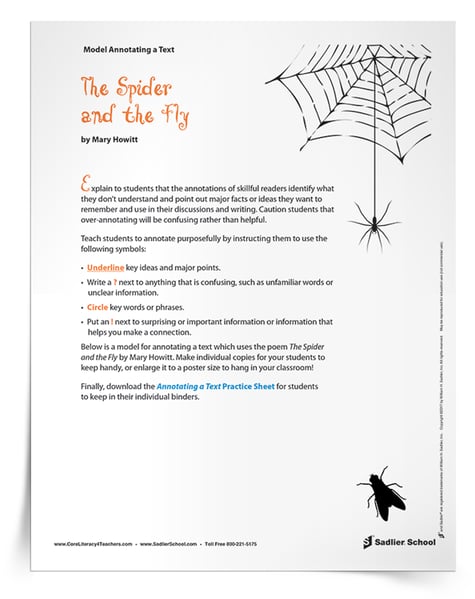
Once your elementary students have learned the correct way to annotate a text, have them practice annotating with a purpose! With my Annotating Practice Worksheets, students will practice their annotation skills while reading the following articles:
- Eagles
- The First Playground
- The Dove and the Ant
Strategy 4: Self-Monitoring
One of our goals as educators is to get our students to be able to do the work independently. Self-monitoring strategies will help elementary students independently keep track of what they do and do not understand while reading a complex text. When reading closely, elementary students can use self-monitoring strategies to ensure they check for basic understanding and think more critically. The process of "self-monitoring" includes:
- Visualize
- Ask yourself questions
- Draw conclusions
- Reread to clarify
Download a Self-Monitoring Strategies Checklist now and model these strategies for your elementary students. This checklist will allow your students to go through the close reading process without you instructing them through every step.
In Summary
Close reading and critical analysis of complex texts is essential to building successful critical readers! The information and close reading worksheets in this article will inspire you to effectively teach close reading so your elementary students gain a deeper understanding of complex texts. To gain a deeper understanding of close reading and just how important it is for students to master, enroll in Sadlier's FREE 2-Part Close Reading Camp.



